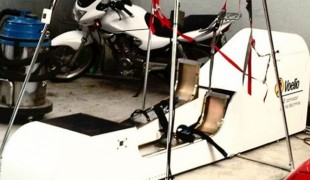- 11349
- 699
- 19
- 12
- 0
- Help Ukraine
About the solution
James’ molds were hot, uncomfortable, and expensive, and so his father, who is a senior lecturer and the head of Auckland University’s transportation engineering group decided to create new splints.
By collaborating with a pediatric neurologist Dr. Rakesh Patel, and Professor Xun Xu, a professor and lecturer on 3D printing, Douglas was able to develop smart splints that are cheaper and more confortable. The splints help realign a child’s feet and promote easier movement. Its production costs $50.
The Smart Splints are made by creating electronic scans or using photographs of the affected limb, a mold is printed which represents an exact fit from the digital splint, and the splints are then 3D printed.
Wilson and Dr. Patel came up with the idea in 2013, and they created four prototypes as proofs of concept for children with cerebral palsy, muscular dystrophy, and other disabilities.
“With cerebral palsy, because of their neurological problem their feet go in odd shapes because the muscles pull in different directions,” Dr. Patel says. “It means they can’t walk properly so what we try to do is correct the position. It improves the chances of walking and getting them upright and more mobile.”
According to Dr. Patel, the splints can be used to help people with stroke, spinal cord injury, polio, multiple sclerosis, peripheral neuropathy, arthritis, and even perhaps even broken bones.
Engineering graduate students will complete clinical trials, and they hope to have results soon.
Adapted from: http://3dprint.com/48197/smart-splints/
这些解决方案不应包括使用药物,化学品或生物制品(包括食品);创伤性设备;冒犯性的,商业或内在危险的内容。该解决方案未经医学验证。请谨慎进行!如果您有任何疑问,请咨询健康专家。
DISCLAIMER: This story was written by someone who is not the author of the solution, therefore please be advised that, although it was written with the utmost respect for the innovation and the innovator, there can be some incorrect statements. If you find any errors please contact the patient Innovation team via info@patient-innovation.com
-
-
591
-
0
-
10739

Patient invents curb climber to walk around more easily
WALKING: Walking
WALKING WITH A WALKING AID: Walking with a walking aid
Cerebral Palsy
Spinal Cord and Nerve Root Disorders
Neuromuscular Disorders
Assistive Daily Life Device (to help ADL)
Walking Aid (wheelchair/walker/crutches)
Muscle cramps or spasms
Difficulty coordinating movements
Stiffness or rigidity (difficulty moving)
Paralysis of the legs and lower body
Muscle weakness
Loss of balance
Anxiety
Restoring mobility
Promoting self-management
Managing Neurological Disorders
Maintaining Balance and Mobility
Neurology
Pediatrics
United States
-
-
-
351
-
0
-
4299

Collaborator Pierluigi Mantovani creates Evolution Devices - solutions that aim to transform Multiple Sclerosis Management
CAREGIVING
BODY BALANCE: Maintaining body balance
STANDING UP: Standing up from a seated position
WALKING: Walking
Multiple Sclerosis
Assistive Daily Life Device (to help ADL)
Walking Aid (wheelchair/walker/crutches)
App (Including when connected with wearable)
AI algorithm
Body-Worn solutions (Clothing, accessories, shoes, sensors...)
Restoring mobility
Regaining sensory function
Managing pain
Promoting self-management
Preserving Organ Function
Managing Neurological Disorders
Maintaining Balance and Mobility
To improve Treatment/Therapy
Preventing (Vaccination, Protection, Falls, Research/Mapping)
Raise awareness
Caregiving Support
General and Family Medicine
Internal Medicine
Medical Genetics
Neurology
Physical Medicine and Rehabilitation
United States
-
-
-
513
-
0
-
9091

Father creates walking aid for his son
WALKING: Walking
WALKING WITH A WALKING AID: Walking with a walking aid
CAREGIVING
Cervical spinal cord injury/Tetraplegia
Walking Aid (wheelchair/walker/crutches)
Restoring mobility
Promoting self-management
Preserving Organ Function
Rehabilitating After Stroke
Managing Neurological Disorders
Recovering from Traumatic Injuries
Maintaining Balance and Mobility
To improve Treatment/Therapy
Raise awareness
Caregiving Support
General and Family Medicine
Internal Medicine
Neurology
Pediatrics
Physical Medicine and Rehabilitation
Argentina
-
 zh
zh